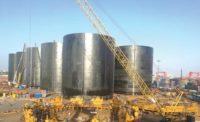
U.S. businesses are expanding their presence into China to take advantage of the country's growing consumer base, improving infrastructure, trading centers and special economic zones. However, understanding the country's cultural, legal and regulatory differences can be extremely daunting. It takes vision, commitment and—in many cases—a guide.
By 2003 I had spent several years working for Mortenson Construction in the United States. As a Chinese national, I was struck by the differences between Mortenson and typical Chinese construction firms. The extraordinary capital spending in China resulted in an industry where many firms were driven by short-term gains without a long-term strategy for customer needs. By contrast, Mortenson (like many U.S. contractors) had endured several business cycles, served multiple segments and customers over long periods of time and had a more thoughtful approach based on quality and long-term value.
I shared my thoughts with David Mortenson, a third-generation member of the Mortenson family business. The company had grown since 1954 by serving existing customers in an expanding circle of markets, including Canada, South America, Europe and Japan. It seemed China could be the next frontier.
A short time later, we noted that the Chinese construction market continued to grow rapidly and Chinese firms were climbing fast in the world's top contractor ranking. In 2004 we made our first trip to China to help a long-term semiconductor customer expand its manufacturing presence. High-tech manufacturing experience was limited in the local marketplace, and quality and building efficiency issues were pervasive. Our customers badly needed help, but we wondered, "Should an American company like Mortenson jump in with both feet to compete with Chinese contractors?"
Our strategic analysis centered on managing value for our customers. After a number of follow-up trips to China, we concluded that the service our U. S. customers needed most from us in China was not to swing a hammer but to bridge the gap between their facility expectations and the local project-delivery capabilities. Customers had consistent concerns about overall project quality, transparency and trust. A high-quality project management service that bridges cultural and market divides was—and is—the key to achieving successful project delivery, especially for U.S. companies with high expectations for building performance.
My personal background and Mortenson's international experience put us in a unique position to provide that value. In 2005 we established the company's first permanent office in China. Located in Shanghai, we provide program, project and construction management services for our U.S. customers. Our mission is to add value for our customers' business without directly competing with Chinese contractors for labor-related work. The niche we best serve is acting as a critical link between North American customer expectations and successful project delivery.
Over the last seven years, this strategy has proven to be the right one for us and our customers, whether it's Disney, the NBA or Covance. While it has taken substantial resources and work to get there, business has grown because of the right mix of customers, projects and opportunity.
Running a business in China, however, isn't easy. We have faced many challenges, such as finding and hiring the right talent. Exceptional people deliver exceptional results—there is no other way around it. It is a common bottleneck for growth in China. We have addressed this by having our top performers spend nine to 12 months in the U.S. learning firsthand our culture, standard processes and the expectations of U.S. customers.
Our commitment to operations in China is for the long term. It sets the foundation for Mortenson's business operation there and allows us to make decisions influenced by long-term benefits in lieu of short-term gains. As I see it, vision and commitment are vital to a meaningful venture in China.



Post a comment to this article
Report Abusive Comment